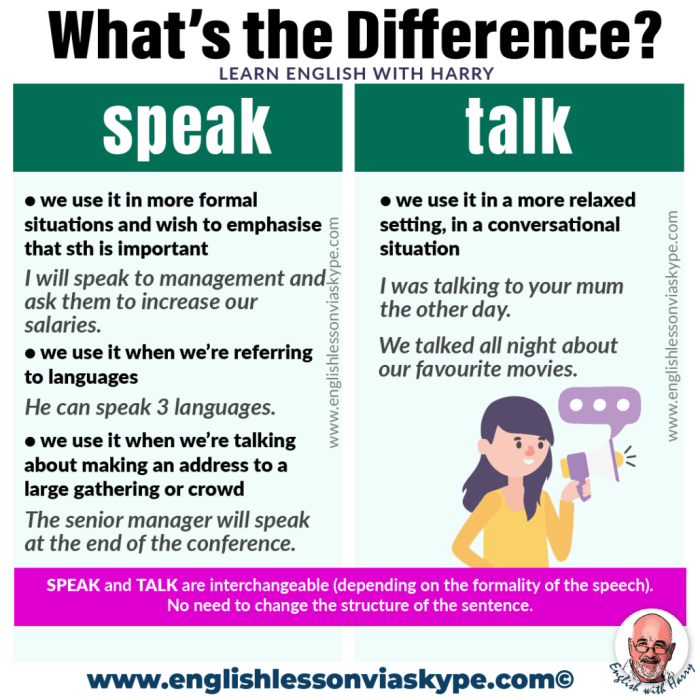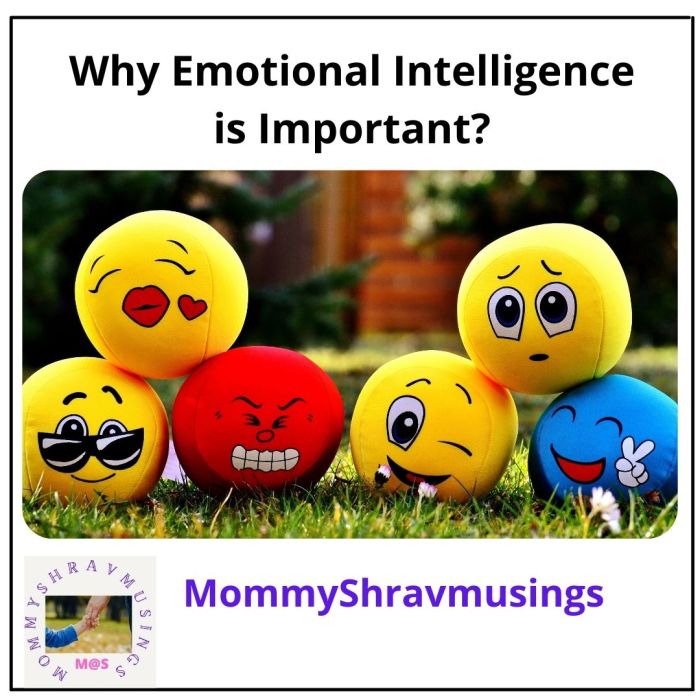How to talk to people when you have nothing to say? This guide dives deep into the often-overlooked art of social interaction, exploring the psychological factors that contribute to feeling speechless and offering practical strategies for overcoming this common hurdle. We’ll unpack the anxieties that might be lurking behind the silence, examine different communication styles, and provide a toolkit of conversation starters, icebreakers, and techniques for handling awkward moments.
From understanding the root of your social discomfort to building confidence and practicing active listening, this comprehensive guide will empower you to navigate social situations with grace and ease, even when the words seem to vanish.
Understanding the Problem
The feeling of having nothing to say in social situations is surprisingly common, affecting people of all backgrounds and social circles. It’s often a complex issue stemming from a combination of psychological factors and social anxieties. Understanding these underlying causes is crucial to developing effective strategies for overcoming this challenge. This section will delve into the psychological underpinnings, the various forms of social anxiety, and common scenarios where this feeling arises.The experience of feeling speechless in social settings is frequently rooted in a fear of judgment, a desire to avoid conflict, or a lack of confidence in one’s ability to engage in meaningful conversation.
This fear can be deeply ingrained, often originating from past experiences of social rejection or negative feedback. The feeling can be exacerbated by self-doubt and a tendency to overanalyze social interactions.
Psychological Factors Contributing to Speechlessness
Social situations often trigger a cascade of anxieties. The fear of appearing foolish, unintelligent, or uninteresting can lead to a sense of paralysis, making it difficult to formulate thoughts and express them clearly. This is frequently linked to low self-esteem and a perceived lack of social skills.
Strategies for Recognizing Speechlessness
Recognizing the onset of this feeling is the first step in overcoming it. Pay attention to physical sensations such as a racing heart, sweaty palms, or a knot in your stomach. Observe your thoughts and emotions. Are you focusing on potential negative outcomes or overly concerned about what others think? These physical and mental cues can alert you to the presence of speechlessness.
Social Anxieties Contributing to the Feeling
Various social anxieties can contribute to the feeling of having nothing to say. Social anxiety disorder, characterized by a persistent fear of social situations, is a prominent example. This fear can manifest as a fear of embarrassment, fear of judgment, or fear of not being able to keep up with the conversation. Other forms of anxiety, like generalized anxiety disorder or performance anxiety, can also contribute to the feeling.
Common Scenarios Where Speechlessness Arises
The feeling of having nothing to say often arises in specific social situations. Meeting new people, attending social gatherings, or being in a conversation with someone you admire can trigger this response. Also, public speaking engagements, or situations where you’re expected to provide an opinion or insight, can amplify this feeling. Interviews or important presentations are other scenarios that often elicit speechlessness.
Comparison with Other Forms of Social Discomfort
The feeling of having nothing to say is distinct from other forms of social discomfort, such as shyness or introversion. While introversion is characterized by a preference for solitude, the feeling of having nothing to say often occurs in situations that would otherwise be considered socially acceptable. This feeling is also distinct from simple awkwardness or a lack of common ground with the person you’re speaking to.
Lack of Words vs. Lack of Interest
It’s important to differentiate between a lack of words and a lack of interest. A lack of words might stem from anxiety, while a lack of interest often indicates a disengagement from the conversation. Recognizing this difference is essential for responding appropriately and fostering meaningful connections.
Manifestation in Communication Styles
The feeling of having nothing to say can manifest in various communication styles. Some individuals might become withdrawn and quiet, while others might attempt to fill the silence with irrelevant or off-topic comments. Others might display a lack of enthusiasm, and their responses might be brief and lacking in detail. Understanding these different manifestations can help in tailoring responses and interactions.
Building a Foundation for Conversation
Navigating social interactions can feel daunting when you’re not brimming with spontaneous ideas. Fortunately, conversation isn’t about possessing an endless wellspring of wit; it’s about establishing a framework that allows you to connect with others genuinely and effectively. This framework involves recognizing common ground, asking insightful questions, and actively listening, all while paying attention to the nuances of non-verbal communication.This guide will equip you with the tools to build a solid conversational foundation, transforming awkward silences into engaging dialogues.
We’ll explore how to identify common conversation topics, craft questions that spark interest, and master the art of active listening. Furthermore, we’ll delve into the power of mirroring and reflecting, and how subtle adjustments to your body language can project confidence and engagement.
Identifying Common Conversation Topics
Understanding shared interests and experiences is crucial for initiating and sustaining conversations. This involves recognizing the common ground that connects you to others. Common topics can include hobbies, current events, shared experiences, or professional fields. Observing the other person’s interests and aligning the conversation accordingly helps create a natural flow and demonstrates genuine interest.
Engaging Questions to Spark Conversation
Crafting questions that spark genuine interest is key to keeping the conversation flowing. Instead of asking direct questions that can be answered with a simple “yes” or “no,” aim for open-ended inquiries that encourage detailed responses.
Sometimes, you just don’t have anything to say. It’s a common experience, and it’s totally okay! Often, the best thing you can do is acknowledge the silence. And sometimes, that silence is best filled with a little space. Understanding the importance of personal space in relationships, as discussed in this helpful article on 7 reasons make room for personal space your relationship , can actually help you navigate those moments when conversation feels awkward.
Ultimately, respecting space and allowing for thoughtful pauses can lead to more meaningful interactions in the long run.
- Instead of: “Do you like sports?” Try: “What’s your favorite sport, and why do you enjoy it?”
- Instead of: “Where do you live?” Try: “What’s your favorite thing about your neighborhood or city?”
- Instead of: “What do you do for work?” Try: “What’s the most interesting part of your job, and what are you most proud of achieving?”
Open-Ended Questions for Deeper Discussion
Open-ended questions facilitate deeper conversations by encouraging the other person to share their thoughts, feelings, and experiences. These questions go beyond surface-level interactions, inviting the other person to reflect and elaborate.
- Examples include: “What are your thoughts on…?”, “How have you been feeling about…?”, or “What are your hopes and dreams for the future?”
Active Listening and Genuine Interest
Active listening is more than just hearing words; it’s about truly understanding the speaker’s perspective. Pay attention to their body language, tone of voice, and the underlying message behind their words. Demonstrate your engagement through nonverbal cues, like nodding, maintaining eye contact, and asking clarifying questions.
Mirroring and Reflecting
Mirroring involves subtly matching the other person’s body language and tone of voice, while reflecting involves paraphrasing or summarizing what they’ve said to confirm your understanding. This demonstrates empathy and encourages the conversation to flow smoothly.
Importance of Non-Verbal Communication
Nonverbal cues like posture, facial expressions, and gestures often convey more than words. A confident posture, a genuine smile, and appropriate eye contact can significantly enhance your communication style.
Adjusting Body Language for Confidence and Engagement
Your body language plays a crucial role in projecting confidence and engagement. Maintain an open posture, make appropriate eye contact, and use gestures to emphasize your points. Avoid fidgeting or slouching, as these can signal nervousness or disinterest.
Practical Conversation Starters
Knowing how to initiate conversations is crucial for building connections and fostering meaningful interactions. This section delves into practical methods for starting conversations, encompassing various approaches to engage with others. From shared experiences to current events, humor, and observations, these strategies will empower you to navigate social situations with confidence.
Conversation Starters Based on Shared Experiences
Understanding shared experiences provides a strong foundation for conversation. These can be anything from attending the same event, to experiencing a similar challenge. This approach taps into common ground and fosters a sense of connection.
- Have you ever been in a situation where you felt completely lost? What did you do?
- What’s the most memorable trip you’ve taken? What made it so special?
- Have you ever had a chance encounter that changed your perspective? If so, what was it?
Conversation Starters Related to Current Events or Popular Culture
Staying informed about current events and popular culture can spark interesting discussions. This approach allows for engaging conversations that often lead to deeper understanding.
Figuring out how to talk to people when you’re feeling tongue-tied can be tricky. Sometimes, the best approach is to focus on genuine engagement and find common ground. A great way to bolster your confidence in social interactions is to embrace positivity, and research shows that positive thinking has tangible benefits. For example, check out got positivity 5 reasons positive backed science to learn more about the science behind positivity.
Ultimately, remembering to listen actively and ask thoughtful questions can help you navigate those moments when you’re searching for the perfect words, leading to more meaningful connections with others.
- What are your thoughts on the recent developments in [specific current event]? Have you seen any relevant discussions on social media?
- What’s your favorite movie/TV show/book from the past year, and why?
- Have you seen any recent viral videos or social media trends? What are your opinions on them?
Conversation Starters Based on Shared Interests
Discovering shared interests can lead to a rich and fulfilling conversation. This approach allows you to explore common passions and create a comfortable atmosphere.
- What are some of your favorite hobbies? What do you enjoy about them?
- Have you recently discovered a new hobby or interest? What sparked your interest in it?
- If you could learn any new skill, what would it be and why?
Using Humor Appropriately in Conversation, How to talk to people when you have nothing to say
Humor can be a powerful tool in conversation, but it’s essential to use it judiciously. Humor should be lighthearted and relevant to the context.
- A good conversationalist often uses relevant jokes and witty remarks to engage their audience. What are some types of humor that you enjoy?
- Humor should be used thoughtfully and appropriately to avoid offending or alienating others. What are some factors to consider when using humor?
- A well-timed joke can lighten the mood and make a conversation more enjoyable. What are some examples of humor that you think are effective?
Using Observational Comments to Build Connections
Observational comments can be insightful and demonstrate an interest in the other person. They build rapport and encourage further conversation.
- Making thoughtful observations about the person’s attire or surroundings can be a good conversation starter. How can you use observation to make a positive connection with someone?
- Observing and commenting on something relevant to the person’s interest or current situation can create an effective conversation starter. What are some examples of thoughtful observational comments?
- Observing and commenting on relevant details about the person’s behavior or actions can lead to a connection. What are some examples of observational comments that can build a connection?
General-Interest Questions to Break the Ice
General-interest questions can be a good way to initiate a conversation and find common ground. They can lead to a broader range of discussions.
- What are some interesting things that you’ve learned recently?
- What’s a book, movie, or TV show that has impacted you in a meaningful way?
- If you could travel anywhere in the world, where would you go and why?
Conversation Starters Around Shared Hobbies or Activities
Discovering shared hobbies or activities can create an immediate connection and provide a basis for a longer conversation.
- Have you tried any new activities lately? What was your experience?
- What are some of your favorite places to go for activities?
- What are some hobbies or activities you’d like to try in the future?
Handling Silence and Unsure Moments

Navigating social situations often involves navigating awkward pauses and unsure moments. Learning to gracefully handle these silences can significantly enhance your interactions and make you appear more confident and engaging. These moments, while potentially uncomfortable, are a natural part of conversation, and with a few strategies, you can transform them from obstacles into opportunities.Understanding that silences are a normal part of conversation, and that they can be overcome, is crucial.
Addressing these moments with preparedness and understanding can turn potential stumbling blocks into stepping stones in your social journey.
Strategies for Filling Short Silences Gracefully
Short silences are common in conversations, and filling them naturally and appropriately can make you appear more conversational. Instead of panicking or feeling pressured, focus on observing the conversation flow and finding natural ways to bridge the gap.
- Use a Transition Phrase: A simple “Right,” “So,” “And then,” or “That’s interesting” can subtly shift the conversation’s rhythm and provide a smooth transition, demonstrating your active engagement in the discussion. For example, if someone says they enjoyed a recent movie, responding with “Right, and what was the part that you liked the most?” provides a bridge and prompts further discussion.
- Ask a Follow-Up Question: This demonstrates your engagement and keeps the conversation flowing. For instance, if someone mentions a hobby, follow up with “What do you enjoy most about that?” This demonstrates your interest in their hobby and opens a new avenue of conversation.
- Offer a Related Observation: Drawing a connection to a previous point or comment can fill the silence and keep the conversation on track. For example, if someone talks about their recent trip, you could say, “That sounds like a beautiful experience, I’ve always wanted to visit that part of the world too!”
Acknowledging and Responding to Awkward Silences
Awkward silences, while sometimes unavoidable, don’t have to be intimidating. Understanding how to acknowledge them without undue pressure is key.
- Acknowledge the Silence Directly: A simple, “Hmm,” “Interesting,” or a slight pause can signal that you’re processing what’s been said and are still engaged in the conversation, without forcing a response. This demonstrates attentiveness without feeling pressured to fill the silence immediately.
- Use Body Language to Show Engagement: Maintaining eye contact, nodding, and leaning slightly forward can convey your attentiveness and interest, even if you haven’t formulated an immediate response.
- Embrace the Pause: Recognize that short pauses are common and natural in conversations. Don’t feel compelled to fill every silence immediately. This is especially true when discussing complex or sensitive topics.
Redirecting Conversation If It Stalls
If a conversation seems to be losing momentum, gently redirecting the discussion to a new topic can be a useful strategy.
- Introduce a New, Related Topic: If the conversation has run its course, subtly introduce a new topic that relates to the previous discussion. For instance, if you’ve been discussing travel, you could mention a recent article you read about sustainable tourism.
- Ask an Open-Ended Question: A well-crafted open-ended question can steer the conversation in a different direction while keeping the previous discussion in mind. For example, after discussing a film, you could ask “What are some other films you’ve enjoyed that have similar themes?”
- Use a Transition Statement: Transitioning to a new topic with a simple statement like “Speaking of…” or “On a different note…” can help seamlessly move the conversation forward.
Politeness in Disengaging
Knowing when and how to politely disengage is just as important as knowing how to engage.
- Gentle Exit Strategies: Use phrases like “It was lovely talking to you,” “I’ve got to run now,” or “I should probably head off now.” These phrases allow you to gracefully exit the conversation without feeling abrupt.
- Providing a Reason: If possible, offer a quick and polite reason for needing to leave, such as “I have another appointment,” or “It was nice catching up.” This demonstrates consideration.
- Using a Natural Cue: If the conversation has reached a natural end point, or if a new opportunity arises, you can politely disengage by signaling you need to move on.
Using Humor to Defuse Awkward Situations
Humor can be a powerful tool for easing tension and defusing awkward situations.
- Self-Deprecating Humor: Using self-deprecating humor can diffuse tension and create a lighter atmosphere. For example, if a conversation stalls, you could say “I’m terrible at keeping conversations going, aren’t I?”
- Relatable Jokes: Relatable jokes or observations can create a shared experience and strengthen the connection between individuals.
- Appropriate Timing: Ensure the humor is relevant to the situation and doesn’t feel forced or inappropriate. Use it strategically to diffuse an awkward silence, not to dominate the conversation.
Appropriate Ways to Politely End a Conversation
Knowing when and how to end a conversation is crucial.
- Natural Cues: Pay attention to cues such as a change in the environment, a new arrival, or a mutual agreement to move on. These are all natural indicators that the conversation is nearing its end.
- Verbal Signals: Using phrases like “It was great talking to you,” “It was nice catching up,” or “I have to run now” can provide a polite and clear signal that you want to conclude the conversation.
- Consideration for Others: If the conversation isn’t progressing or you need to leave, a polite and concise ending is crucial.
Enhancing Communication Skills
Mastering communication isn’t just about knowing what to say; it’s about how you say it and how you connect with others. This involves actively listening, initiating conversations, responding thoughtfully, and overcoming obstacles to clear and confident expression. By developing these skills, you’ll not only improve your social interactions but also build stronger relationships and achieve your goals more effectively.Effective communication is a multifaceted skill that requires conscious effort and consistent practice.
Sometimes, you just don’t have the words. It’s tough to connect with people when you’re mentally drained, and that’s completely normal. It’s like trying to stay focused on your goals when you’re exhausted – you need to find ways to recharge. Learning how to manage your energy and build resilience, like in how stay focused your goals when you are worn out , can help you find the words you need to connect with others.
Ultimately, acknowledging those quiet moments and knowing how to navigate them is key to effective communication.
Understanding the fundamentals of conversation is crucial, but enhancing your communication skills goes beyond these basics. This involves building upon your foundation to achieve more sophisticated and impactful interactions.
Active Listening Techniques
Active listening is more than just hearing; it’s about truly understanding the speaker’s message, both verbally and nonverbally. This involves focusing intently on the speaker, avoiding distractions, and reflecting back their thoughts and feelings to confirm your understanding. By practicing active listening, you demonstrate respect and build rapport.
- Pay close attention to the speaker’s words and body language. Observe their tone of voice, facial expressions, and gestures. These cues often reveal more than just the spoken words.
- Summarize and paraphrase the speaker’s message. Restate what you’ve heard in your own words to ensure you understand the message correctly. This demonstrates your engagement and allows the speaker to clarify any misunderstandings.
- Ask clarifying questions. Show your interest by asking thoughtful questions to gain a deeper understanding of the speaker’s perspective. Avoid interrupting or formulating your response while they are still speaking.
- Avoid interrupting and formulate your response after the speaker has finished their point. Allow the speaker to express themselves fully without interruption. This demonstrates respect and fosters a safe environment for open communication.
Conversation Initiation Strategies
Initiating conversations can feel daunting, but with a few strategies, it can become a natural part of social interaction. Planning conversation starters in advance can help alleviate anxiety and ensure you have a few options readily available.
- Prepare a few conversation starters. Think of a variety of topics, from current events to shared interests. Having a few options allows you to tailor your approach to the specific situation and the person you’re speaking with.
- Observe your surroundings and identify potential conversation opportunities. Look for cues that suggest an opening for conversation, such as shared experiences or common interests. This could involve recognizing a shared hobby or finding common ground in current events.
- Use open-ended questions. Instead of questions that can be answered with a simple “yes” or “no,” ask questions that encourage the other person to elaborate and share their thoughts.
- Be mindful of the environment. Consider the context and adjust your approach accordingly. For example, a conversation at a social gathering might be different from a conversation at a work meeting.
Practicing Responses to Questions
Developing a repertoire of thoughtful responses to various questions can enhance your communication skills. This involves considering different perspectives and formulating articulate answers.
- Anticipate potential questions. Consider common questions you might be asked in different social settings and brainstorm potential responses.
- Practice responding to questions in a safe environment. Practice answering questions with a friend or mentor to gain confidence and identify areas for improvement.
- Consider different perspectives when formulating responses. Try to understand the underlying reasons behind the questions and respond in a way that addresses the speaker’s intent.
- Tailor your response to the specific context and audience. Adjust your tone and language to suit the setting and the individuals you are interacting with. This might involve using formal language at a professional meeting or more casual language at a social gathering.
Overcoming Speech Blocks
Speech blocks, moments of hesitation or silence, can be overcome with conscious effort and techniques for managing nerves.
- Recognize and acknowledge the block. Don’t try to force words. Acknowledge the pause and allow yourself to take a breath.
- Use fillers strategically. Using words like “um,” “uh,” or “well” can buy you time to collect your thoughts, but use them sparingly.
- Focus on your breath. Deep, controlled breathing can help calm your nerves and regain composure.
- Refocus your attention. Redirect your attention back to the conversation by actively listening to the speaker.
Expressing Thoughts and Ideas Clearly
Articulating your thoughts and ideas clearly is essential for effective communication. This involves organizing your thoughts and choosing appropriate language.
- Organize your thoughts before speaking. Take a moment to structure your ideas logically before expressing them.
- Choose precise language. Select words that accurately convey your meaning and avoid ambiguity.
- Use examples and anecdotes to illustrate your points. This can make your ideas more relatable and engaging for the listener.
- Be mindful of your body language. Maintain eye contact and use gestures to enhance your message.
Building Confidence and Self-Assurance
Building confidence in social settings is crucial for effective communication. This involves recognizing your strengths and practicing self-compassion.
- Focus on your strengths. Identify your positive qualities and use them to build confidence.
- Practice self-compassion. Be kind to yourself and acknowledge that everyone experiences moments of uncertainty.
- Seek out positive feedback and constructive criticism. Use feedback to identify areas for improvement and build upon your strengths.
- Prepare for potential challenges. Anticipating challenges can help you develop strategies for managing them.
Communication Skill Exercises
Consistent practice is key to enhancing communication skills. These exercises provide opportunities for focused development.
- Role-playing scenarios. Practice different communication scenarios with a friend or mentor, such as negotiating a deal or giving a presentation.
- Join a public speaking club. A public speaking club provides a supportive environment to practice speaking in front of an audience.
- Engage in discussions with diverse groups of people. Exposure to different perspectives broadens your understanding and communication skills.
- Record yourself speaking and analyze your performance. Identifying areas for improvement can help you refine your communication skills.
Addressing Specific Challenges: How To Talk To People When You Have Nothing To Say
Navigating social situations can be tricky, especially when feelings of inadequacy arise. This section dives deeper into common social anxieties and offers practical strategies for overcoming them. We’ll explore how to handle challenging social encounters, build rapport, and deal with individuals who might be difficult to converse with. Understanding these specific challenges is key to improving social interactions and fostering genuine connections.
Identifying Common Triggers of Social Inadequacy
Social situations often trigger feelings of inadequacy when we perceive a gap between our expectations and our perceived performance. These situations can include public speaking, meeting new people, attending social gatherings, or participating in group discussions. Fear of judgment, embarrassment, or not knowing what to say can create significant anxiety. Often, these feelings stem from a combination of factors, including past experiences, self-doubt, and societal pressures.
Recognizing these triggers is the first step towards developing effective coping strategies.
Strategies for Overcoming Challenges
Developing a toolkit of strategies is essential for effectively navigating challenging social situations. These strategies should be tailored to the specific situation and the individual’s comfort level. Techniques such as practicing active listening, focusing on shared interests, and initiating conversations about common ground can help alleviate feelings of inadequacy. Furthermore, adopting a growth mindset, understanding that social skills are developed through practice, and focusing on the positive aspects of interaction can be instrumental in overcoming anxieties.
Responding to Challenging Social Situations
Facing a difficult social situation doesn’t mean succumbing to anxiety. It requires understanding how to respond calmly and effectively. For instance, if someone interrupts you during a conversation, acknowledge the interruption politely and re-state your point. If you find yourself in a conversation with someone who is difficult to engage with, try focusing on shared interests or common experiences to build a connection.
If the conversation remains unproductive, it’s perfectly acceptable to politely disengage. Practice makes perfect in these scenarios.
Addressing Specific Social Anxieties
Addressing specific social anxieties requires a nuanced approach. For example, public speaking anxiety can be mitigated through practice and preparation. Visualize a successful presentation, practice in front of a mirror, or rehearse with friends or colleagues. Similarly, meeting new people anxiety can be addressed by focusing on common interests and asking open-ended questions. Remember, building connections is a two-way street.
Dealing with Difficult Conversationalists
Dealing with difficult conversationalists requires tact and understanding. Recognizing the communication style of the individual and adapting your approach accordingly can be helpful. For example, if someone is dominating the conversation, politely interject with relevant points or redirect the discussion to shared interests. If the conversation becomes confrontational, calmly disengage and move on.
Building Rapport and Connection
Building rapport and connection is about demonstrating genuine interest in others. Active listening, asking open-ended questions, and showing empathy are key elements. Sharing personal anecdotes relevant to the conversation can foster a deeper connection. Focusing on shared interests, creating a comfortable atmosphere, and showing genuine enthusiasm for the conversation are crucial elements in building rapport.
Comparing Different Approaches to Social Interaction
Different social interactions require different approaches. A formal meeting demands a different approach than a casual gathering. Formal settings often require more structure and direct communication, whereas casual settings allow for more relaxed and conversational approaches. Adapting your communication style to the specific social context can improve the quality of your interactions.
Developing Confidence and Self-Esteem
Unlocking your inner confidence is a journey, not a destination. It’s about cultivating a positive self-image and recognizing your inherent worth. This process involves understanding the interplay between self-perception and social interaction, and actively working to reframe negative thought patterns. Confidence isn’t about pretending to be someone you’re not; it’s about embracing who you are and communicating authentically.Building confidence and self-esteem is essential for navigating social interactions with ease and authenticity.
By fostering a positive self-image, you’ll find yourself better equipped to handle challenges, engage in meaningful conversations, and ultimately, enjoy more fulfilling social experiences. This empowerment arises from understanding your strengths, accepting your imperfections, and practicing self-compassion.
Strategies for Building Confidence in Social Interactions
Developing confidence in social situations is a gradual process that involves consistently practicing positive self-talk and recognizing your strengths. This involves a proactive approach to building a strong sense of self-worth, rather than simply reacting to external pressures.
- Actively Listen and Respond Authentically: Paying close attention to others and responding thoughtfully, without trying to fill awkward silences with forced conversation, builds trust and rapport. This genuine interaction creates a more comfortable and engaging environment for everyone.
- Focus on Shared Interests: Identifying common interests with others can provide a natural foundation for conversation. This approach eliminates the pressure to come up with clever remarks or fill silences, making interaction more relaxed and enjoyable.
- Embrace Vulnerability: Sharing personal experiences, even small ones, can foster connection and create a sense of shared understanding. Vulnerability, when authentic, can build trust and intimacy in social interactions.
- Practice Active Self-Care: Prioritizing physical and mental well-being directly impacts your confidence. Adequate sleep, healthy eating, and regular exercise are fundamental to feeling good about yourself, which naturally translates into more confident social interactions.
Improving Self-Esteem and Self-Worth
Self-esteem is a complex interplay of internal beliefs and external validation. It’s crucial to recognize that true self-worth isn’t contingent on external approval.
- Challenge Negative Self-Talk: Identifying and challenging negative thought patterns is fundamental to building self-esteem. Replacing negative self-criticism with positive affirmations and realistic self-assessments can have a significant impact.
- Focus on Personal Strengths: Recognizing and celebrating your strengths, no matter how small, reinforces a positive self-image. Keeping a journal to record achievements and positive attributes can be a powerful tool.
- Seek Supportive Relationships: Surrounding yourself with positive and encouraging individuals can significantly impact your self-esteem. Healthy relationships provide support and validation, which contributes to a stronger sense of self-worth.
- Practice Self-Compassion: Treat yourself with the same kindness and understanding you would offer a friend facing a challenge. Self-compassion allows you to acknowledge mistakes without resorting to harsh self-criticism.
The Importance of Self-Acceptance in Communication
Self-acceptance is the bedrock of authentic communication. It involves recognizing your strengths and weaknesses without judgment, and communicating from a place of genuine self-understanding.
- Embrace Imperfection: No one is perfect. Acknowledging and accepting your imperfections allows for more authentic and vulnerable interactions. This honesty often fosters deeper connections.
- Focus on Growth, Not Perfection: Concentrate on personal growth rather than striving for unattainable perfection. This shift in perspective can significantly reduce pressure and increase self-acceptance.
- Value Your Unique Perspective: Your experiences and perspectives shape who you are. Value your unique perspective, as it contributes to enriching conversations and interactions.
Techniques for Reframing Negative Thoughts
Negative thoughts can significantly impact your self-perception and social interactions. Developing techniques to reframe these thoughts is essential for building confidence.
- Identify Negative Thought Patterns: Become aware of recurring negative thoughts and patterns. Recognizing these patterns is the first step in changing them.
- Challenge the Validity of Negative Thoughts: Question the evidence supporting negative thoughts. Are they based on facts, or assumptions? If the assumptions are not factual, replace them with positive or neutral ones.
- Replace Negative Thoughts with Positive Affirmations: Counter negative thoughts with positive affirmations. These statements can reinforce a more positive self-image and improve confidence.
Identifying and Challenging Negative Self-Talk Patterns
Negative self-talk is a pervasive pattern that can significantly undermine self-esteem and confidence. Identifying and challenging these patterns is crucial for building a more positive self-image.
- Recognize Patterns: Identifying recurring negative self-talk patterns is the first step toward change. Note when and how often these patterns emerge.
- Challenge the Validity: Question the accuracy of these negative thoughts. Are they based on evidence, or assumptions? Challenge assumptions and replace them with more realistic and positive perspectives.
- Replace with Positive Statements: Actively replace negative thoughts with positive and supportive self-statements. This conscious effort can reshape your self-perception and enhance your communication skills.
Relationship Between Self-Perception and Social Interaction
Self-perception plays a significant role in how you interact with others. A positive self-image often translates into more confident and engaging social interactions.
- Positive Self-Image Fosters Confidence: A positive self-image builds confidence and a sense of self-worth, which allows you to engage with others more freely and authentically.
- Self-Doubt Impacts Interactions: Self-doubt can hinder social interactions by making you hesitant or anxious. It can lead to negative self-talk and a perceived lack of confidence.
- Authenticity Through Self-Acceptance: Authenticity in communication arises from self-acceptance. When you accept yourself, you’re better equipped to communicate openly and honestly with others.
The Importance of Practicing Positive Affirmations
Positive affirmations are powerful tools for building self-esteem and confidence. They reinforce positive self-perception and improve communication skills.
- Consistent Repetition: Regular repetition of positive affirmations reinforces positive self-talk patterns.
- Personalization of Affirmations: Creating affirmations tailored to your specific needs and goals makes them more impactful.
- Focus on Action-Oriented Affirmations: Using affirmations that encourage action and accomplishment can motivate you to achieve your goals.
Final Wrap-Up

Ultimately, connecting with others is a journey of self-discovery and skill development. This guide provides a roadmap to understanding your communication style, identifying your triggers, and building confidence in social interactions. By equipping yourself with practical strategies and a positive mindset, you can transform moments of silence into opportunities for meaningful connections. So, take a deep breath, embrace the journey, and discover the power of authentic communication.











